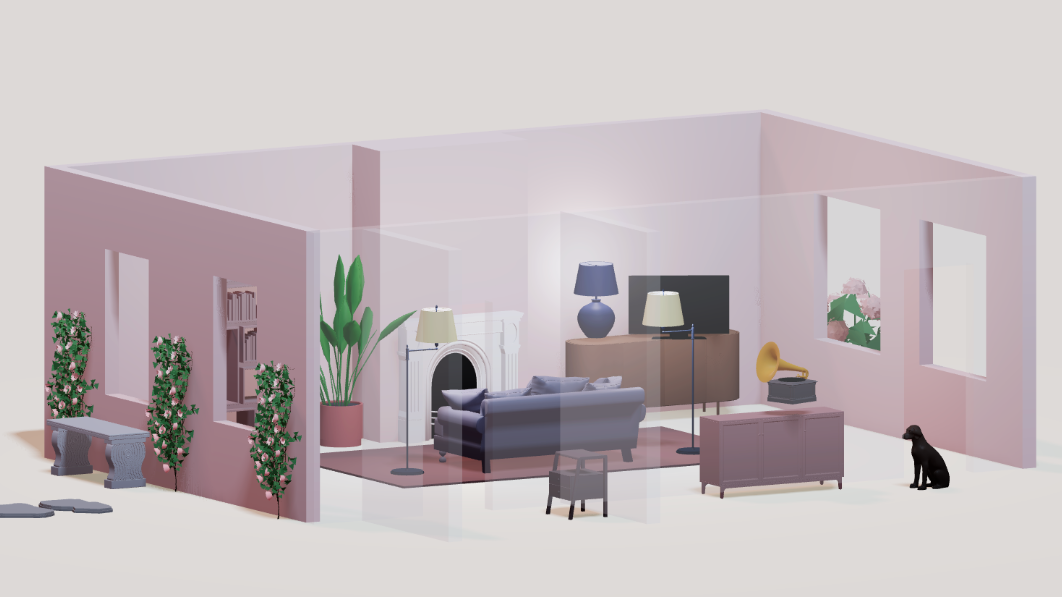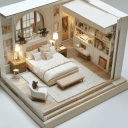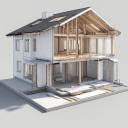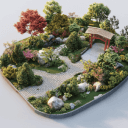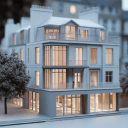Seasonal home staging is more than just swapping out pillows or adding holiday décor—it’s about transforming a space to feel inviting and current for each season. Professional stagers know that a home styled for summer should evoke breezy brightness, while a winter staging might emphasize warmth and coziness.
The challenge is convincing clients (homeowners or real estate agents) of these seasonal transformations before you even start moving furniture. This is where Arcadium 3D becomes a game-changer. By using 3D room design technology, you can create dynamic furniture layouts and seasonal décor schemes virtually, helping you win staging contracts by showcasing your vision with crystal clarity.
In this guide, we’ll explore how a native 3D room designer (like me!) uses Arcadium 3D to plan seasonal stagings, impress clients, and secure more business.
Design Your Home Now
Seasonal Staging: Why It Matters
Seasonal staging means tailoring the look and feel of a home to the time of year. Why bother with seasonal touches? Because buyers are emotional. A light and airy design in spring or summer suggests fresh beginnings, while a snug, layered look in fall or winter conveys warmth and comfort. For example, in spring, you might use pastel accents, blooming florals, and thinner fabrics to signal renewal.
In summer, staging could highlight indoor-outdoor flow—think sheer curtains, patio furniture, and bright, cool color schemes. Fall staging often introduces autumnal colors (rust, gold, deep greens), plush throws, and maybe a centerpiece of seasonal foliage. In winter, you’ll emphasize coziness: warm lighting, soft blankets, perhaps a reading nook by the fireplace.
All these nuanced changes can make a property feel timely and well-maintained, keeping potential buyers interested. By updating a listing’s look to match the season, you show that the home adapts and shines year-round.
However, communicating these seasonal concepts to clients can be tricky with just mood boards or verbal descriptions. They might nod along, but are they truly picturing the inviting pumpkin-spice ambiance you plan for fall, or the crisp coastal vibe for summer? Staging professionals often win contracts by painting a clear picture of the final result.
This is why leveraging a 3D visualization tool is so powerful – it bridges the gap between your imagination and the client’s understanding. According to industry data, interactive 3D models can boost client engagement by up to 70%, and even cut down approval times by half.
In short, when clients can see it, they believe in it. Seasonal staging, backed by realistic 3D previews, becomes your secret weapon for securing that “yes” on a home staging proposal.
From Vision to Visualization: The Power of 3D in Home Staging
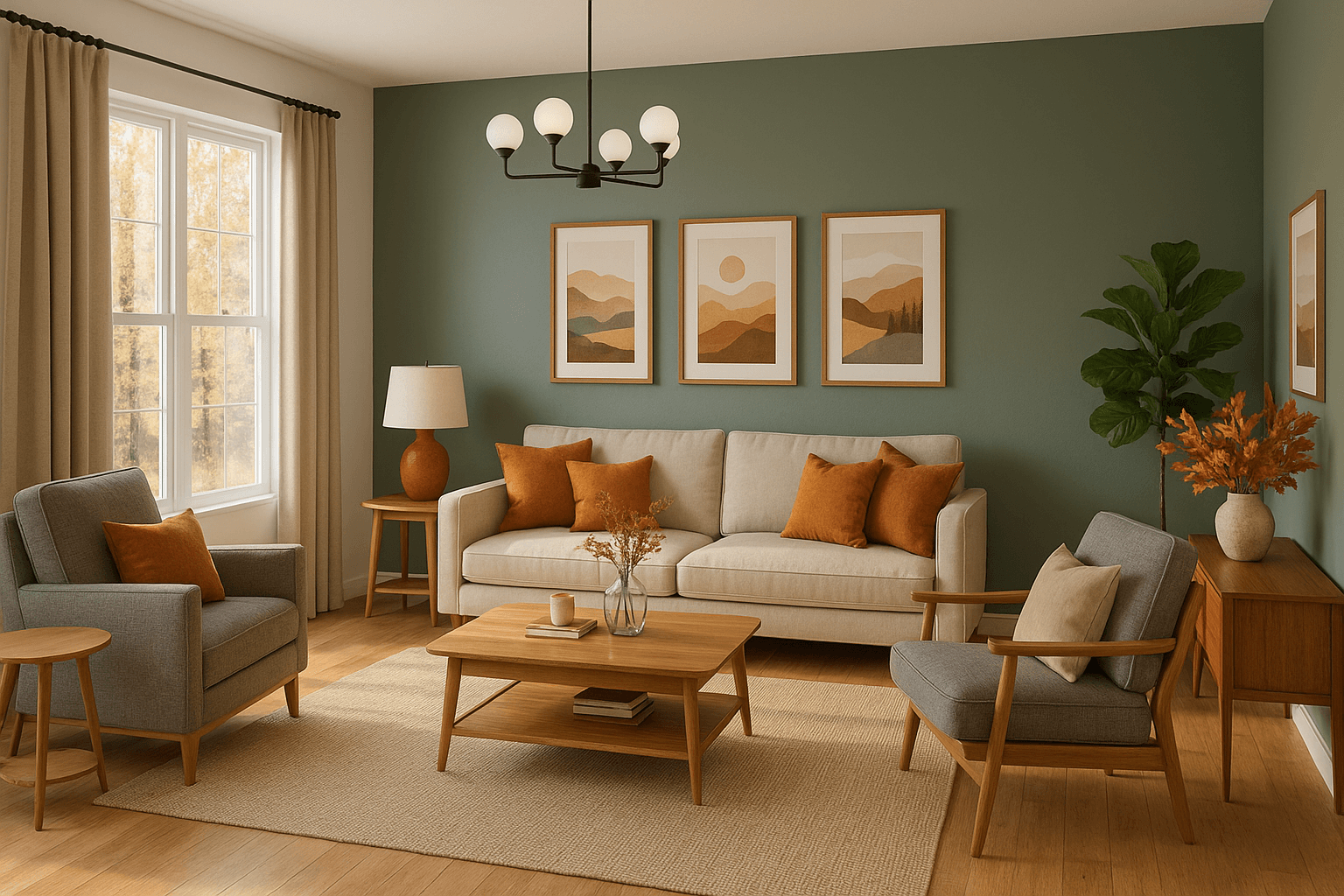
Traditional staging pitches often rely on 2D floor plans, inspiration photos, or past portfolio images. While those have merit, they don’t always resonate with clients who lack spatial imagination. This is where 3D visualization transforms the game. With a 3D model, your client isn’t left guessing – they get a virtual walkthrough of their own property, fully staged.
They can stand (virtually) in the living room you’ve styled for winter and feel how inviting it will be on a cold day, or tour the patio setup you’re proposing for summer and imagine hosting a BBQ there. This tangible sense of space and style can make your proposal far more persuasive than words alone.
Arcadium 3D’s technology amplifies these benefits. It’s a modern, browser-based 3D design platform created for quick, detailed interior modeling. Unlike complicated CAD software, Arcadium 3D is incredibly intuitive—“as easy as a video game” to pick up—which means you don’t need to be a tech guru to impress your clients with polished 3D visuals.
The software runs entirely online (no hefty downloads or high-end hardware required), so you can fire it up on any average laptop and start designing in minutes. Speed is key when you’re trying to win a contract: if a new client calls, you could literally draft a sample room design the same day to include in your proposal. With Arcadium’s free and fast toolkit, turning your vision into a sharable 3D model is nearly instant.
Crucially, Arcadium 3D comes loaded with features that are a boon for home stagers:
Extensive Furniture Library:
You’ll find thousands of pre-modeled furniture and décor items in many styles. Whether your staging concept leans modern, farmhouse, or coastal, Arcadium likely has pieces to match. Every item is correctly scaled and fully editable.
In fact, every object is parametric—meaning you can stretch, shrink, or tweak dimensions on the fly to fit the room’s needs. Need that sofa a tad wider to fill a space? Just pull it wider; Arcadium adjusts the model in real time. This flexibility lets you virtually replicate the actual furniture you plan to use or experiment with new pieces without restraint.
Lighting and Ambiance Controls:
Seasonality often comes down to lighting (bright natural light for summer, warm cozy glows for winter). Arcadium’s lighting tools let you simulate these conditions easily. Add windows or adjust the sun position to see how morning vs. evening light will flood the room.
Insert floor lamps, pendants, or candles and set their brightness and color temperature to preview a cozy winter evening scene versus a sunlit summer afternoon. This means you can demonstrate to a client how changing the lighting scheme between seasons affects the mood of the home
Material and Color Swaps:
Seasonally, color palettes change. Arcadium allows one-click material and color changes on surfaces and objects. For instance, you can switch a living room’s drab beige walls to a fresh eggshell blue for spring, or swap out a light summer rug for a rich, textured one for fall in seconds. These instant changes help clients compare seasonal looks side by side.
You can even duplicate your design file to create variant schemes – say, a “Holiday Edition” of your staging with festive accents, and a neutral version for after the holidays. Toggling between the two in 3D offers a compelling before-and-after showcase.
Instant Rendering & Walkthroughs:
Arcadium doesn’t make you wait hours for a realistic image; as you design, it’s rendering on the fly. Textures, shadows, reflections update instantly as you move furniture or change colors. At any point you (or your client) can tap into a first-person view to walk through the virtual space as if you’re inside it.
This immersive walkthrough can be done via web link on a computer or even on a phone, with no app installs. Clients love this feature – it’s like a virtual open house. In fact, being able to interact with a space virtually often seals the deal: it fosters a personal connection as clients “try out” different layouts, leading to greater confidence in your proposal.
Collaboration and Sharing:
Perhaps one of Arcadium 3D’s biggest advantages is how easily you can share your designs with others. With one click, you generate a shareable URL to your project. Send it to your client and they can open the fully interactive 3D model in their browser—no account or software needed. They can roam through the staged rooms, leave comments at specific spots (e.g., “Can we try a round coffee table here instead?”), and truly be part of the design process.
This transparency and interactivity can significantly speed up the feedback loop and build client trust. Instead of days of back-and-forth emails trying to explain ideas, you get near-instant approval because the client sees exactly what you propose. Arcadium “instantly gives clients a feel for the property via a URL” as one resource puts it, embodying best-in-class client collaboration practices.
By harnessing these features, you elevate your staging service from a commodity (“I’ll bring some furniture and decorate your home”) to a high-tech partnership. You’re showing clients their space in a way they’ve never seen before. This level of professionalism and clarity can tip the scales in your favor when competing for a staging contract.
Design Your Home Now
Arcadium 3D: A Free Room Design Tool Made for Home Stagers
Let’s talk specifically about why Arcadium 3D is especially suited for home stagers aiming to win contracts. As a free room design tool, it lowers the barrier to entry—anyone can start using it with zero cost, which is ideal for small staging businesses or freelancers watching their budget. There’s no expensive license to purchase upfront, and yet the capabilities rival those of pro design software.
More importantly, Arcadium 3D strikes a beautiful balance between professional precision and user-friendliness. In my experience as a 3D room designer, I’ve found some tools are either too simplistic (cartoonish visuals that don’t impress clients) or too complex (steep learning curve, which slows down getting a proposal out).
Arcadium sits in the sweet spot. It was “tailored for non-complex and fast idea-to-result” design work, meaning it’s optimized to go from a blank canvas to a fully furnished room fast. This speed is crucial when dealing with staging clients; often, you might get a call about a vacant property that needs staging “yesterday”. Being able to whip up a beautiful 3D concept overnight can literally win you the job over a competitor who only provided a verbal plan.
Consider the workflow Arcadium enables for a home stager:
Measure & Map:
You start by inputting the room’s dimensions. Arcadium’s drafting mode lets you quickly draw walls and drop in doors/windows to mirror the property’s floor plan. If you have the blueprint dimensions, great—enter them for a to-scale model. If not, you can drag walls until they match your on-site measurements (the software shows real-time lengths as you drag). Accuracy at this stage means your furniture layout later will be reliable. You can even model architectural quirks (that odd nook or low beam) so your staging plan is realistic.
Furnish & Layout:
Using Arcadium’s library, you then drag-and-drop furniture into the model. This is where being a designer gets fun. Start with the big “anchor” pieces that define the space’s function (sofa, bed, dining table, etc.), just like you would in a real staging process.Arcadium’s catalog has dozens of styles for each piece; for instance, you can choose a clean-lined modern sofa or a plush transitional one. Pick whatever resembles the style you’re proposing for that home.
Everything can be tweaked: if the living room needs a slightly longer couch, you stretch the model to the exact length (e.g., change an 80-inch sofa to 90 inches). Want to see if a sectional works better than a loveseat? Swap it in a few clicks. The ability to rapidly iterate layouts without any heavy lifting is a lifesaver—Arcadium encourages this kind of risk-free play, so you can test bold ideas (maybe an unconventional furniture arrangement) and simply undo if it’s not right. All this happens in minutes, not hours.
Add Seasonal Flair:
Now layer in those seasonal accents that will wow your client. Arcadium’s accessory library includes things like rugs, plants, lamps, artwork, etc. For spring, maybe you add a vase of (virtual) tulips on the coffee table and swap the rug to a light-colored, breezy style. For fall, you could place autumn-hued throw pillows on the sofa and a cozy area rug underfoot.If a specific seasonal item isn’t in the library (say, a Christmas tree or a unique decor piece), Arcadium lets you import custom models or even flat images to stand in.
For example, import a .JPEG of a wreath and “hang” it above the fireplace in your winter scene, or add a photo of a beach painting for summer vibes. These little touches can personalize the design for the season.And because you can save multiple versions of a project, you might prepare a “Seasonal Staging Plan” that shows the home in two or three seasonal settings. Clients are often blown away by this foresight – it demonstrates you’re not just thinking about staging now, but how to keep the property attractive if it lingers on the market through different seasons.
Refine Details & Perspective:
With major pieces in place, you fine-tune. Change wall paint colors digitally (maybe a warmer ivory for winter, a cool gray for summer). Adjust the lighting as discussed. Use Arcadium’s first-person view to walk through and ensure the flow is good – e.g., Is there enough clearance behind that chair? Does the room feel spacious or cramped?
Perhaps you notice in 3D that the autumn decor made a corner feel a bit dark; you can add a floor lamp there and immediately see the improvement in lighting. This step is where your designer’s eye verifies that the furniture layout is functional as well as beautiful. Arcadium even allows you to measure distances in-app during the walkthrough, so you can guarantee, say, that there’s at least 3 feet of walkway between the dining table and the wall (no stubbed toes in your staged home!).
Present to the Client:
Here comes the contract-winning moment. Instead of sending a plain proposal describing your plan, you provide a 3D experience. You might email the Arcadium model link with a note: “Click to explore the design I’ve created for your home, set up for the upcoming season.” Many clients will be intrigued enough to open it immediately.As they navigate the virtual staged home, they can truly envision the transformation you’re promising.
If you’re in a live meeting or video call, you can even screen-share the model, guiding them through each room (“Here in the virtual living room, notice how I arranged seating to maximize the fireplace focus for winter coziness…”).This level of visualization not only answers their questions but also builds excitement – they can see their property turning into a more marketable, beautiful listing right before their eyes.
By the end of this process, you’ve given the client something tangible: a realistic preview of their staged home. This dramatically increases the chances they’ll choose you for the job. You’ve mitigated their fear of the unknown and distinguished yourself with professionalism and innovation.
Arcadium 3D, being a free online platform, also means you can let clients tinker if appropriate. Since it’s accessible via browser, I’ve occasionally had homeowners who wanted to try swapping a piece of furniture themselves in the model (yes, Arcadium is simple enough that even a non-designer can drag a chair in it after a five-minute orientation!).
While you should manage this case-by-case, involving a client interactively can further convince them that your goal is to nail their vision. It becomes a collaboration rather than a pitch, which clients appreciate.
As Arcadium’s own interior design guide notes, “Arcadium lets you create multiple different interior designs in minutes. You can share them with clients via a URL and demonstrate the pros and cons of each design.”. This means if a client isn’t sold on your first concept, you can present an alternative just as vividly, all within the same meeting.
Designing Seasonal Layouts: Tips and Tricks
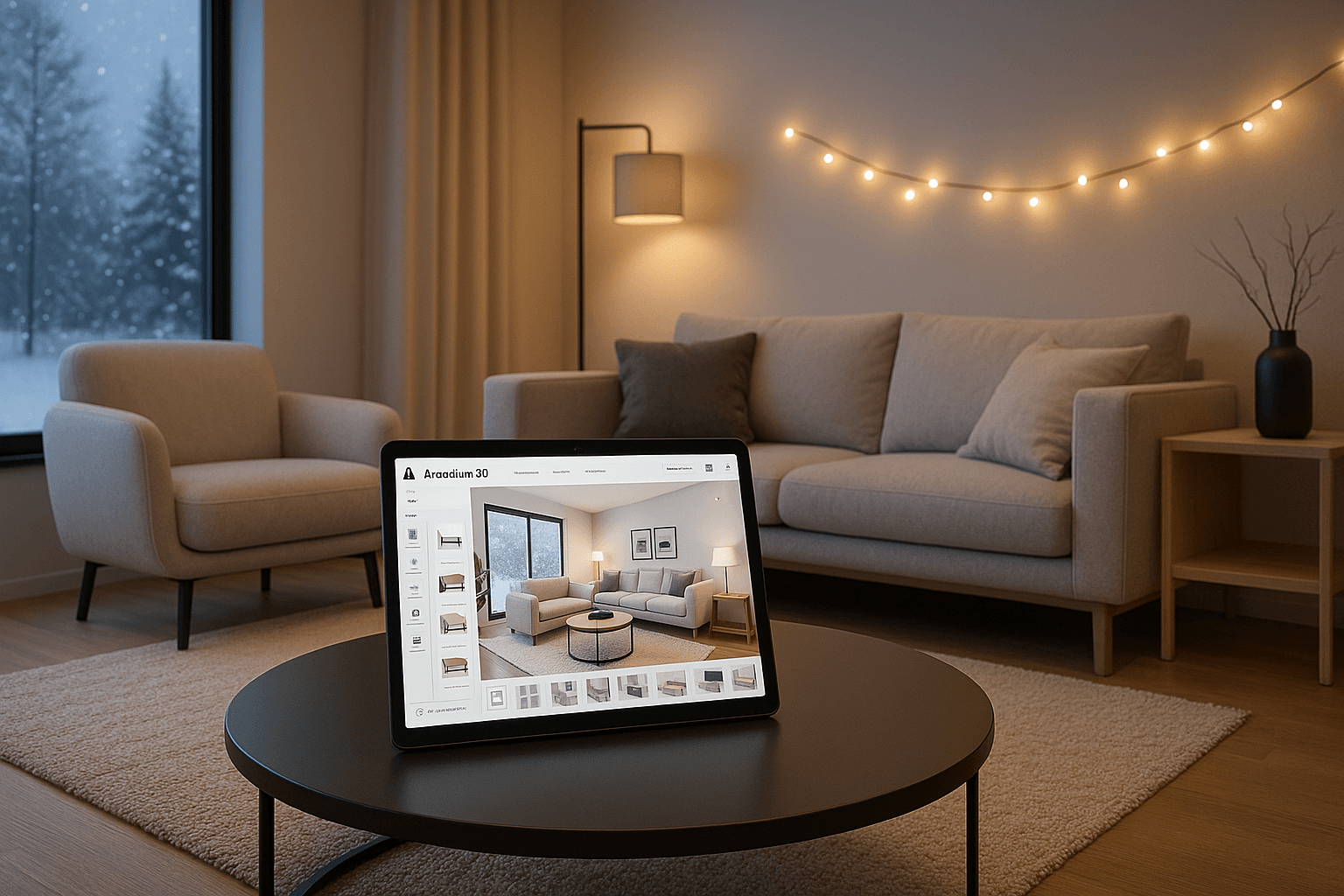
Every season brings new opportunities to highlight a home’s best features. Here are some practical tips on using Arcadium 3D to nail seasonal staging and furniture layouts:
Start with a Neutral Base Layout:
In Arcadium, create a base model of the property with essential furniture placement that works year-round. Save that as your master file. From there, branch off seasonal versions. This way the core layout (flow, function) remains consistent, and you’re simply layering seasonal decor or minor tweaks. It saves time and keeps you from reinventing the wheel each season.
Leverage Preset Styles & AI:
Arcadium 3D has an AI interior design feature where you can generate photorealistic visualizations from your model in various styles. Use this to your advantage – for instance, generate a “cozy cabin” look for winter or a “bright beach house” style for summer from the same 3D scene. The AI might add some creative touches you hadn’t thought of, which you can then tweak. Even without AI, Arcadium’s material color palette generator can suggest seasonal color schemes for you.
Use the Furniture Library for Seasonal Accents:
Remember that Arcadium’s library is not just sofas and beds. It includes plants (great for spring/summer greenery), outdoor furniture (for patios and backyards in summer staging), and decorative objects. For example, add a digital potted poinsettia plant for a subtle holiday nod in winter, or a bowl of (virtual) lemons on a kitchen counter for a summer fresh look.These small additions can make the 3D scene feel authentically seasonal. And if you can’t find a holiday-specific item like a Christmas tree, you can always import a simple cone-shaped tree model or use a tall plant model as a stand-in.
Mind the Floor Plan for Seasonal Function:
Sometimes the furniture layout might change with seasons – and you can demonstrate this. Perhaps in winter, you pull furniture a bit closer together for intimacy around a fireplace, whereas in summer you position pieces to clear french doors that lead to a deck, encouraging indoor-outdoor flow. Don’t be afraid to create two layouts if it serves a purpose.With Arcadium, you can copy the project and rearrange easily, then compare which layout optimizes the space. You might even propose a layout change as part of your service (“We’ll rearrange in the spring to highlight the view once the garden is in bloom”). Showing this foresight in 3D is very convincing.
Optimize Lighting for Season:
Use Arcadium’s lighting adjustment to mimic the season’s natural light patterns. A tip: in the depth of winter, the sun is lower and days are shorter, so check how the rooms look in late afternoon lighting – perhaps you’ll add extra lamps in shadowy corners.For summer, demonstrate how sunshine fills the living area by setting big window exposures at noon. Arcadium’s ability to handle different lighting conditions (with real-time rendering of shadows) means you can find any dark spots or overly bright glares in your design and correct them before they become an issue in real life.For instance, “enhanced lighting features simulate different times of day” to show versatility – use that to your advantage when explaining why your summer staging will have sheer curtains (to soften intense midday sun) or why your winter staging includes mirrors (to amplify limited daylight).
Use High-Quality Snapshots in Your Proposal:
Along with the interactive link, Arcadium allows you to capture high-res images of your 3D scene (even apply effects like sketch or watercolor if you want a stylistic presentation). Include a few of these rendered images in your written proposal or portfolio.For example, a side-by-side image: one of the empty room and one of the fully staged 3D room in its seasonal décor. This dramatic before-and-after can be the “wow factor” on your website or pitch deck. Clients may even forward these images to their partners or decision-makers, effectively selling your work for you.
By following these tips, you ensure that your use of Arcadium 3D isn’t just flashy but strategic. It’s about highlighting the seasonal strengths of the property and addressing any potential weaknesses – all in advance, all virtually.
Design Your Home Now
Winning Contracts with 3D Presentations
At the end of the day, the goal of using Arcadium 3D for seasonal staging is simple: to win more contracts by elevating your client’s confidence. Here’s how embracing 3D in your sales process gives you a competitive edge:
Differentiation:
Not every staging professional goes the extra mile to create a 3D preview. By doing so, you instantly set yourself apart. You’re not just selling furniture placement; you’re selling a vision. When a homeowner or real estate agent compares proposals, yours will stand out as the one with a clear plan they can actually see and walk through. This makes the decision to hire you easier because it removes uncertainty.
Clarity & Trust:
A 3D model eliminates ambiguity. Clients are less likely to have misunderstandings about what goes where, or how something will look. They can point to parts of the model and ask questions, which you can address instantly. This clarity builds trust—clients feel you’re transparent and have nothing to hide. They can virtually validate every choice you’re suggesting, which gives them peace of mind. Satisfied, trusting clients are far more likely to sign a contract (and later, to recommend you to others).
Faster Approvals:
We touched on this earlier—faster client buy-in. When you present a realistic staged environment, you often get immediate positive reactions (“Oh wow, I love that!”). Any changes the client wants can be made on the spot in the 3D model, and you’ve got a revised plan ready in minutes. This agility can turn what used to be a week of deliberation into a single meeting with a signed agreement at the end. In business, time is money; a quicker approval means you can move on to executing the project sooner and even take on more clients.
Professionalism and Modern Appeal:
Using a cutting-edge tool like Arcadium 3D signals that you are a modern, forward-thinking professional. It subtly tells clients that you invest in the best tools to serve them, and that you’re up-to-date with technology and design trends. In real estate and design, where innovation is valued, this can only reflect well on your brand. It’s like the difference between a contractor who sketches a renovation on a napkin versus one who provides a detailed 3D render—the latter just instills more confidence. When you’re trying to win a contract, every bit of confidence you can inspire counts.
Improved Communication with Other Stakeholders:
Sometimes, it’s not just the homeowner you need to convince. Perhaps a realtor, or even the homeowner’s spouse, has a say. A 3D presentation is something shareable and easy for all stakeholders to grasp without you being there to explain. As noted, a simple URL can be viewed by anyone, even on a phone. So if your primary contact needs to forward the plan to their boss or partner for approval, they can do so with full context. This broadens your influence and helps ensure everyone is on the same page—no surprises later.
To sum up this section: Arcadium 3D helps you sell your idea, not just tell your idea. By visualizing seasonal staging concepts vividly and interactively, you tap into clients’ emotions and logic at once (they feel excited and they see the practical plan). That combination is incredibly powerful for closing deals in the home staging business.
FAQs: Using Arcadium 3D for Home Staging
What is Arcadium 3D and how does it help home stagers?
Arcadium 3D is an online 3D home design platform (free to start) that lets you create detailed room layouts with furniture and decor. For home stagers, it’s a game-changing tool to visualize staging plans – you can model a client’s space, add your proposed furniture and seasonal decor, and show them exactly how the home will look staged. This visual presentation makes it much easier to convey your ideas and win clients’ trust.
Can I create seasonal interior designs (spring, summer, fall, winter) with Arcadium 3D?
Absolutely. Arcadium 3D allows you to save multiple versions of a room design, so you can create different seasonal looks. You can easily swap colors, materials, and decor items to reflect each season – for example, light linens and floral accents for spring, or rich textures and warm lighting for winter. The built-in furniture and decor library has a variety of styles, and you can also import custom items, making it simple to add seasonal touches in your virtual staging.
Is Arcadium 3D really a free room design tool? Do I need special hardware or software?
Yes, Arcadium 3D is free to use (with optional upgrades available, but you can do a lot on the free version). It runs completely in your web browser, which means no downloads or powerful computer needed. A standard laptop or desktop with internet access is enough. Since it’s browser-based, you also don’t need any other software – just go to the Arcadium website and start designing. This makes it very accessible for any home stager, even if you’re not super tech-savvy.
Do I need 3D design experience to use Arcadium 3D effectively for staging?
Not at all. Arcadium 3D is designed to be user-friendly – many compare it to playing The Sims or a video game in terms of ease. It has intuitive drag-and-drop controls, and there are tutorials to get you started. You don’t need formal design software training. With a bit of practice, you’ll be able to sketch out floor plans, place furniture, and try different layouts quickly. Many professional stagers and interior designers who were new to 3D have adopted Arcadium because of its gentle learning curve.
How do 3D visuals actually help me win staging contracts?
3D visuals can be the wow factor that sets you apart. When you include a 3D model or photorealistic snapshot of your staging plan in a proposal, clients can literally see the transformation you’re promising. This builds confidence and excitement. It’s much more persuasive than a text description of a layout.
Clients are also more likely to trust your expertise when you present professionally. By walking them through a virtual staged home, you address their questions in real time and show your attention to detail. All of this makes them more comfortable hiring you, since they know exactly what they’ll get. In short, 3D visuals turn your pitch into an experience – and that experience helps clients choose you over others who don’t offer the same level of insight.
Design Your Home Now

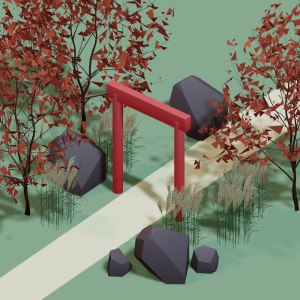 All training, tips and articles
All training, tips and articles
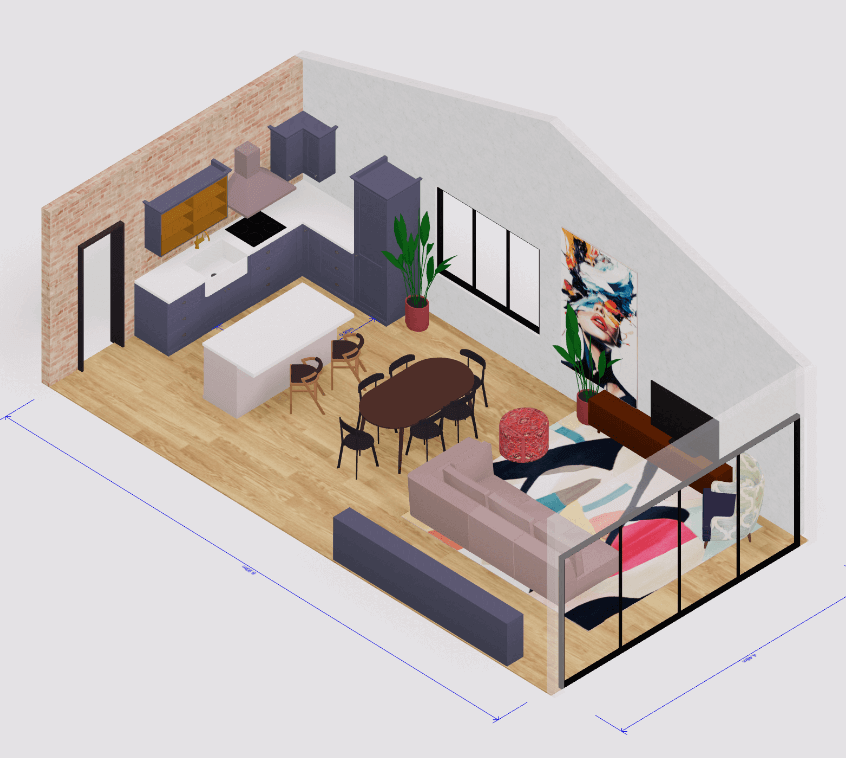 3D house design tool
3D house design tool
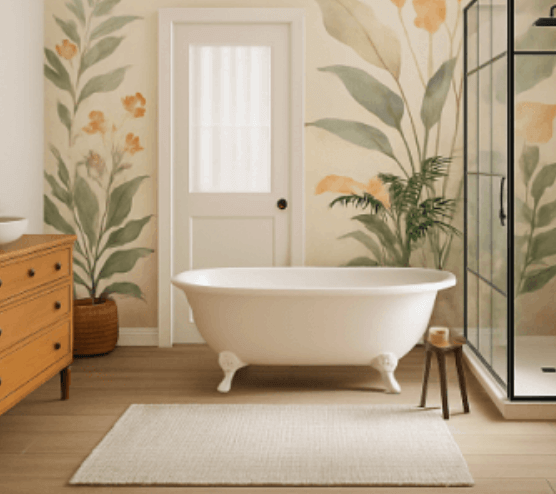
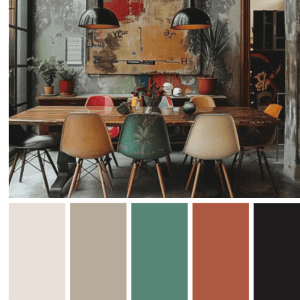 Color palette generator
Color palette generator
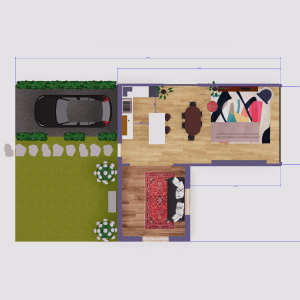 Floor plan creator
Floor plan creator
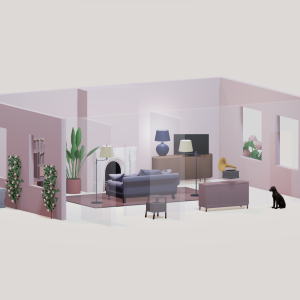 Interior design app
Interior design app
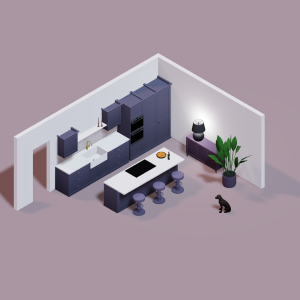 Kitchen design tool
Kitchen design tool
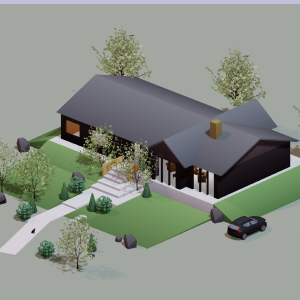 House design software
House design software
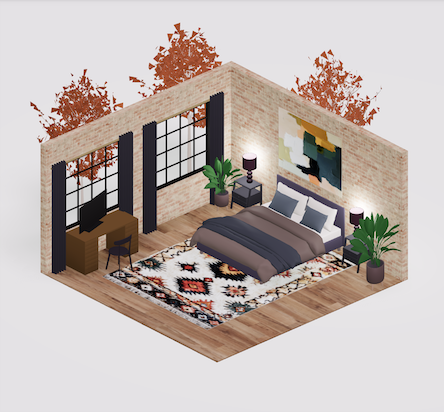 Room designer
Room designer
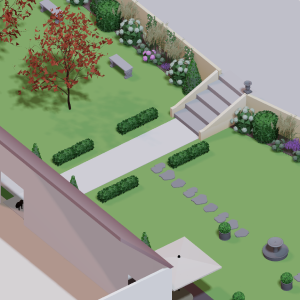 Landscape design software
Landscape design software
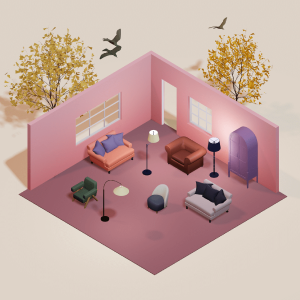 Bedroom design
Bedroom design
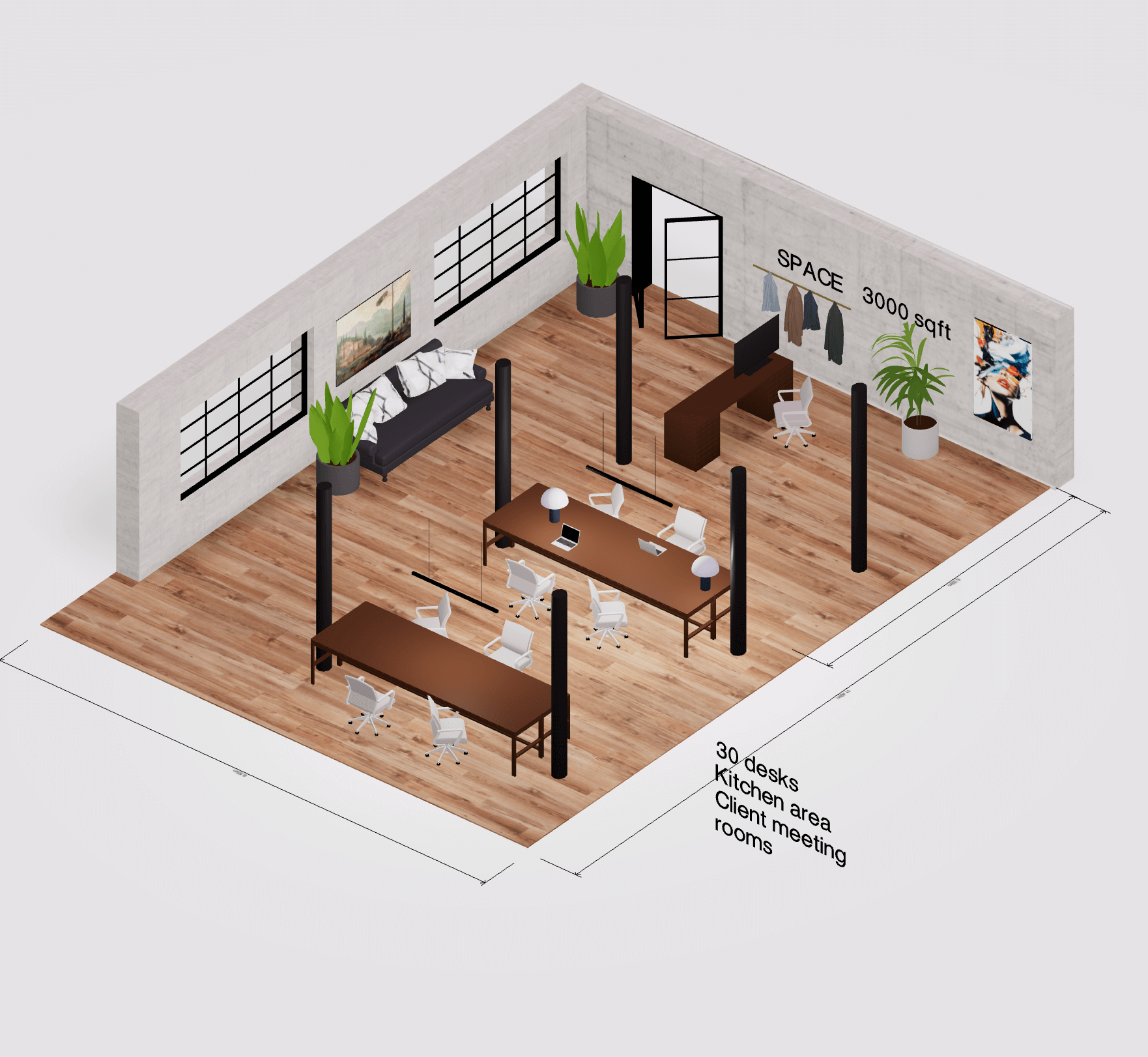 Office floor plan creator
Office floor plan creator
